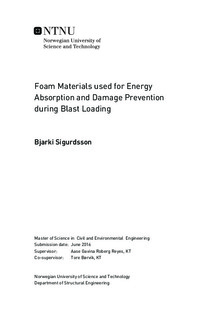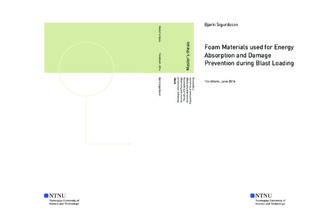| dc.description.abstract | Following several high profile bomb attacks in the western hemisphere in recent years, e.g. Brussels 2016 and Norwegian government quarter 2011, the protection of structures against blast loading has received a lot of attention. Blast loading (due to an accident or a terrorist attack) to important structures in our society can be extremely critical, and it is important to verify that the structure is able to withstand a realistic blast load, or at least minimize the damage to avoid disastrous consequences.
The main objective of the present work was to investigate how a polymer foam (XPS) behaves under dynamic impact and blast loading, and evaluate the performance of this type of foam, when used in structural protection, under these load conditions. Several laboratory experiments and numerical analyses were performed in order to document the polymer foams behavior, and investigate the predictive capabilities of numerical methods.
Considering the complexity of the problems analyzed, the overall observation is that the numerical simulation is in many cases able to predict the test results with reasonable accuracy. Based on the results found both experimentally and numerically, XPS foam is believed to perform well as an energy absorbent in a flexible sandwich configuration, for both low-velocity dynamic impacts and blast loads. Further findings indicate that the blast protection performance of the studied sandwich panels greatly depend on the design parameters, e.g. foam core density. Trends indicate a higher energy absorption for lower foam densities, which suggests that for optimal energy absorption, it is beneficial to use a foam with as low density as possible. However in order to obtain a sound design, the strength of the foam needs to be addressed. | en |

